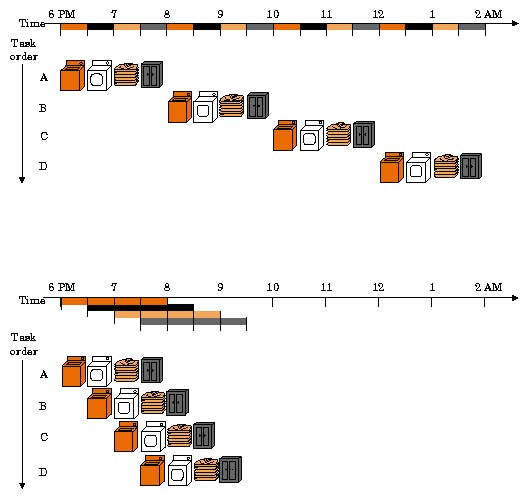This article was originally published on my website.
If you've not been living under a rock, you've probably heard of Monad—the “next big thing” everyone's talking about. But, apart from the airdrop rumours, a cult-like following saying “gmonad” and a few trendy technical terms, there's not that much info about the blockchain on Crypto Twitter.
Following my natural curiosity, I decided to dig a bit deeper and finally answer the question, “What's Monad?”. We'll talk about its features, use-cases, answer some burning questions and discuss the upcoming devnet.
Let's dive in.
Key features
Let's start with a list of the most important Monad features:
Monad is an EVM-compatible L1
10,000 TPS, 1 sec block finality and low fees
Introduces the concept of pipelining, or multi-thread transaction processing to EVM
It has to be said that building an EVM-compatible L1 is not “trendy” any more, so this was the first thing that piqued my interest in Monad.
Why is this important?
It's significant, because all the existing dApps that work on Ethereum, can be redeployed on Monad without any changes.
This means that Monad comes with all the tooling and infrastructure that Ethereum has by default. There is a decent chance that a lot of largest dApps will be live on Monad within days of the mainnet launch, therefore getting real users (not airdrop farmers) from day 1.
Why not build another L2?
Two reasons.
First, decentralisation. L2 sequencers that are used to bundle and process transactions on L2s before sending them to L1 are centralised. Monad's founder Keone Hon thinks that that's going against the crypto's whole purpose.
Second, performance. Despite giving decent transaction speed and lower fees, L2s are still constrained by their L1 chain. The gas fees are still not low enough during congestions, and the transactions are still not fast enough for some use cases.
Let's talk about the use cases, then.
Use cases
This is where I'd like to make a brief introduction to the founder of Monad and CEO of Monad foundation, Keone Hon. From 2013, Keone worked at Jump Trading, where he led a high-frequency trading team. In 2021, Keone joined Jump Crypto as a Quantitative Developer.
This brief digression is important, because, by the looks of it, the main use case for Monad is DeFi and high-frequency trading in particular. High-frequency trading uses powerful computers to execute many orders at extremely fast speeds, often in fractions of a second, leveraging algorithms to analyse market conditions and execute trades at advantageous times.
How is it possible that Monad achieved this transaction speed and cost?
Let's talk tech.
Tech
Monad introduced a few incredibly interesting concepts to achieve its mission, let's go through them.
Pipelining
Pipelining is a technique for implementing parallelism by dividing tasks into a series of smaller tasks which can be processed in parallel.
Monad has a great example of pipelining in their docs:

When doing four loads of laundry, the naive strategy is to wash, dry, fold, and store the first load of laundry before starting on the second one. The pipelined strategy is to start washing load 2 when load 1 goes into the dryer. Pipelining gets work done more efficiently by utilising multiple resources simultaneously.
Asynchronous I/O
Asynchronous I/O is a form of input/output processing that allows the CPU to continue before the transmission has finished.

Synchronous (left) vs asynchronous (right) request processing.
Essentially, Monad created their own database that utilises asynchronous I/O and allows processing multiple transactions at the same time. The read/write speeds are also faster by orders of magnitude thanks to the use of CPU caching and SSD drives.
Deferred Execution
One of the novel aspects of the Monad blockchain is that execution is decoupled from consensus. It's a good read and I don't think I can explain it better than Monad does in their docs, so here is a TL;DR:
Monad blockchain separates execution from consensus, improving speed and scalability.
Unlike Ethereum, where execution precedes consensus, Monad determines state based on agreed-upon transaction order.
To handle malicious nodes or execution mistakes, Monad includes delayed Merle roots in block proposals.
Monad achieves 1-second finality, with execution outcomes lagging by less than 1 second on full nodes.
Light clients can securely query transaction outcomes with a 10-block delay.
Monad's finality occurs after 1 block, with no reordering unless there's malicious behaviour from a supermajority.
Running a Node
Hardware requirements for running a node on Monad are a bit higher, than the ones for Ethereum, but it's understandable, given the need in performance. Still, they are much lower than on Solana, which to me is incredible.
Conclusion
Taking the best from Ethereum and Solana and combining it all seems too good to be true. Still, in my view, Monad is one of the most promising blockchains in a long time, provided they'll deliver what they claim they will.
The devnet is said to be released in a few days (or weeks) and I'm excited to deploy a few contracts and see how the network keeps up with the inflow of all the airdrop farmers.
The hype behind Monad is justified, and I'll definitely be following the project closely.
